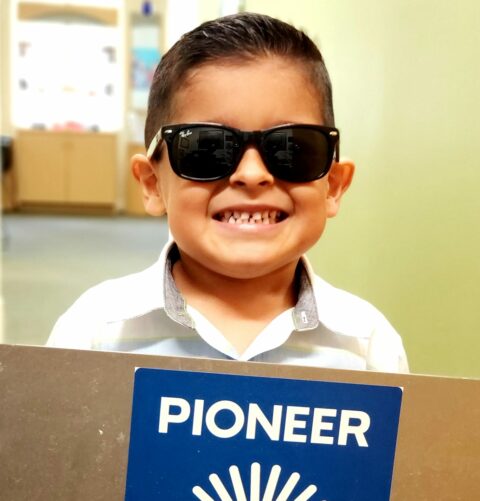- Follow Us:
- Pioneer Vision: (512) 388-7600

We are closed today, January 21 due to the ice storm.
×
When was the last time your child had an eye exam? The American Optometric Association recommends eye exams for children at age six months, three years, right before first grade, and every year thereafter! Since vision is so important in nearly all school activities, a thorough eye exam is a great way to kick-off the school year.
Many children spend years in school before their parents discover that they have a vision problem. Children can’t understand or articulate that they see things differently from their peers. Instead, careful testing is required.
Pediatric eye exams most commonly uncover near or farsightedness or astigmatism. These can blur vision and make learning more difficult if left uncorrected. Other conditions detected in children include eye teaming, tracking, and focusing problems, all of which can interfere with learning.
Children who suffer from these types of vision problems may not enjoy school, may avoid reading, and may simply not perform as well as they could.
Did You Know? It is recommended that children visit with an optometrist between 6-12 months of age. We especially recommend an exam before entering school (ages 4-5).
The best protection against vision problems is regular testing. But there are also some signs you might have noticed at home. Your child could have vision problems if they:
Children with vision problems may appear to have shorter attention spans, may suffer in school, or may otherwise act out — these behavior patterns can be attributed to other issues if the vision problem is not found or corrected.
Did you know? About 6.8% of children have a diagnosed eye or vision problem, and many more may go undiagnosed until adulthood.